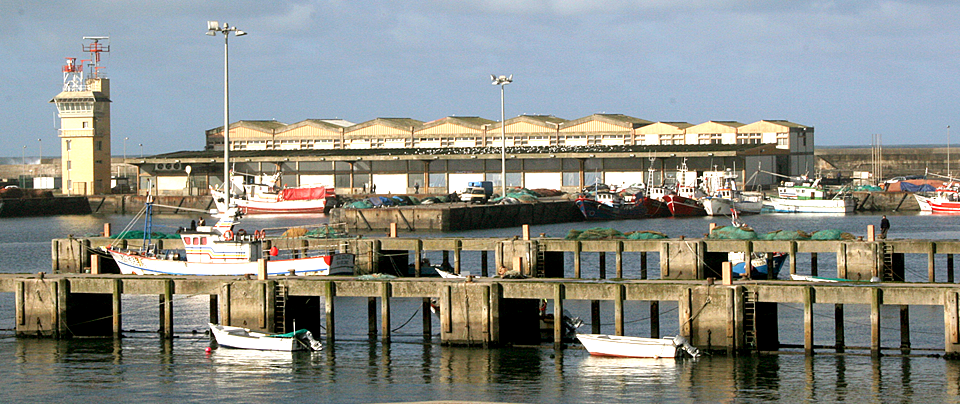


O Port of Povoa de Varzim called up Porto de Varzim (Porto de Veracim in Old Portuguese), in the Middle Ages. The origins of the port date back to the eleventh century, as it is this time that the cove began to be used regularly by vessels, in that it is a zone more or less sheltered. It was in this small bay fisherman poveiro developed his art, generating know-how in shipbuilding beyond the knowledge of the seas, very relevant during the Age of Discoveries, for example. The harbor was once a commercial port in northern Europe, later with the Portuguese empire and is still an important fishing port. It had fundamental importance for the development of Povoa de Varzim.
In 1857, the local Chamber asked the king a place of refuge “I would be in Portugal as good port, better than Vigo”. However, the liberal regime pays no attention to issues poveiras. Due to silting of Barra da Varzim, in the early twentieth century, many fishermen spend unloading at the port of Leixões, a new artificial harbor, where moves a significant part of the fishing population. Emigration to several stops is, this time, significant. Only the New State period is that the port was completed, after 200 years of requests by Poveiros. The works began in 1939 na to finish early 1950, and one of the strongest advocates for the construction of a harbor, throughout the cove, was Vasques Calafate, teacher and journalist who defended this desire of local fishing class in the press in Lisbon and Porto. Today, However, persist silting problems due to lack of maintenance Bar, away from many of the local fishermen, including Galician ports.
In wet southern port, It is now located Marina da Povoa de Varzim which was constructed, together with various other improvements, no final da década de 1990, by the City Council. It is a modern marina, ideal for recreational craft that are exploring the Iberian west coast and for water sports fans. Developed from a project of the Naval Club Povoense, space management was handed over to the club. Today it is a marina in support of boating activity and recently became the most prominent in Northern Portugal. It is characterized by social and multi-cultural, with nautas from around the world from Scandinavia and the United Kingdom to the United States and Australia, that each year are thousands and there are for many months and even years.
The Fishing Port Zone is located in front of the South District, true block fishermen here have created a closed community – hive – who avoided contact with other people and was governed by its own rules. One area of interest point is the Street 31 from January, Pedestrian, the heart of the neighborhood, it extends to the Church of Lapa, dated 1722, a temple where the fishing class honors its patron saint, Our Lady of the Assumption.
Walking to North, is the Monument to S. Pedro, from 1996, overlooking the fishing port, and can also admire the Monument to Peixeira, Established in 1997, a tribute to Póvoa woman who always had a leading role in the fishing Hive Varzim. Then comes the Fortress of Nossa Senhora da Conceição, we built reigns of D. Pedro II e D. John IV in order to defend the Povoa de Varzim of piracy attacks, which consists of four bastions connected by their curtain walls. At entrada do Porto de Pesca, enhancement even for the Monument to the Fisherman, Jose Cutileiro, Established in 2004. Finally, along the wall that divides the beach from the fishing zone, It is installed an Tiles Panel, whose author is the poveiro Fernando Gonçalves (Nando), depicting scenes from ancient Varzim and Poveiros heroes.
